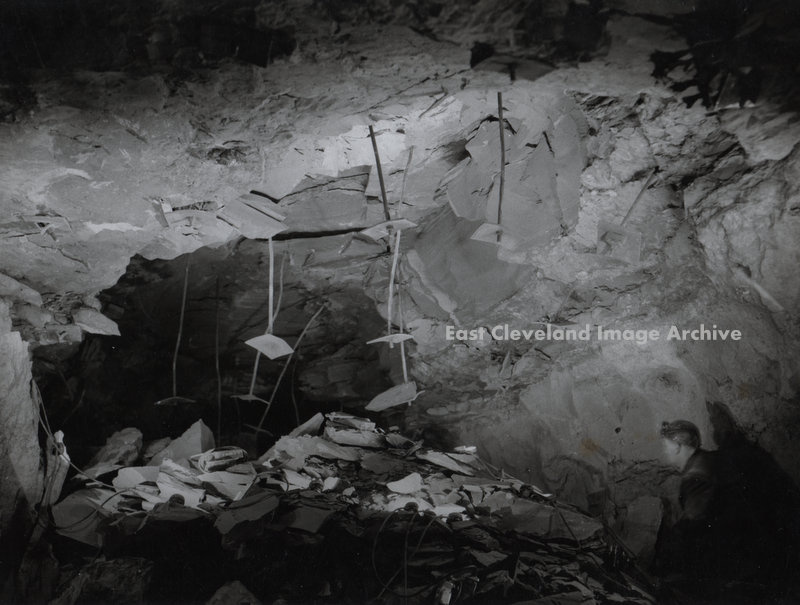
Long range view of exposed roof bolts after roof fall in Linskill’s District of Lingdale Mine, with a miner warily examining the situation.
Image courtesy of George Pearson.
|
|
||
 Long range view of exposed roof bolts after roof fall in Linskill’s District of Lingdale Mine, with a miner warily examining the situation. Image courtesy of George Pearson. 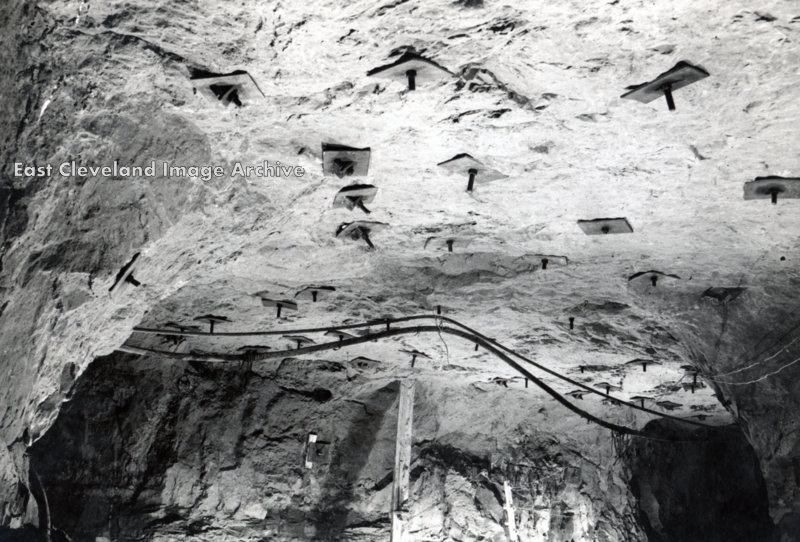 Roof bolting supports at main road junction. Image courtesy George Pearson. 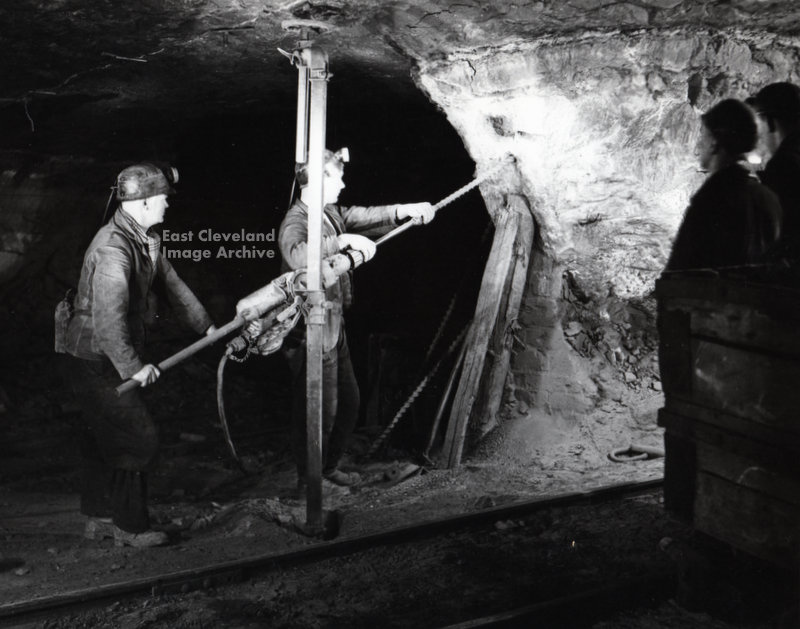 Miners using a pneumatic powered post drill at a junction, in Lingdale Mine 1950s. Image courtesy of George Pearson. 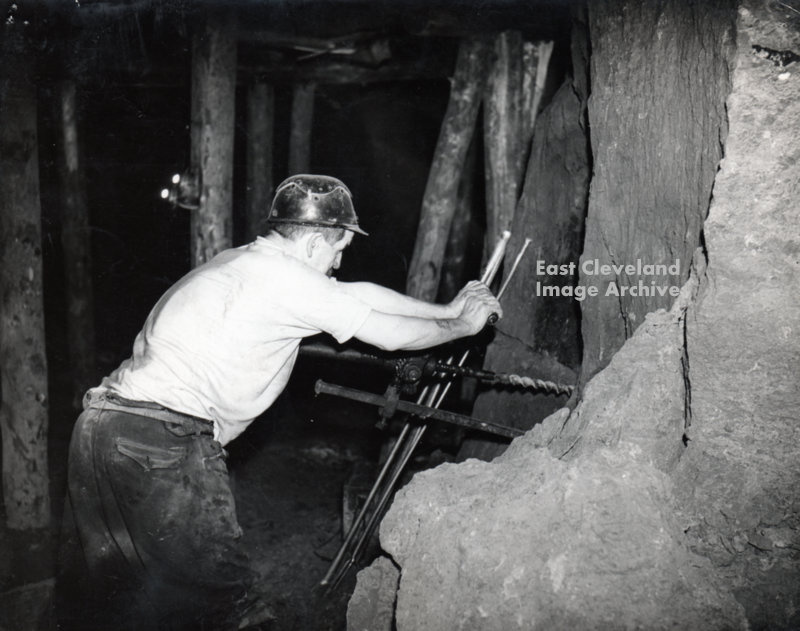 Giving a good view of a miner using a hand ratchet drill, drilling holes ready for the charges by the shotfirer. David Richardson tells us: ”An excellent photograph of a miner in the process of drilling a hole using a Blackett Hutton Hand Rotary Drill and while Hardy Pick Ratchet Drills were used they are operated much differently to the Blackett Huttons.” Image courtesy of George Pearson and thanks to David Richardson for that update. 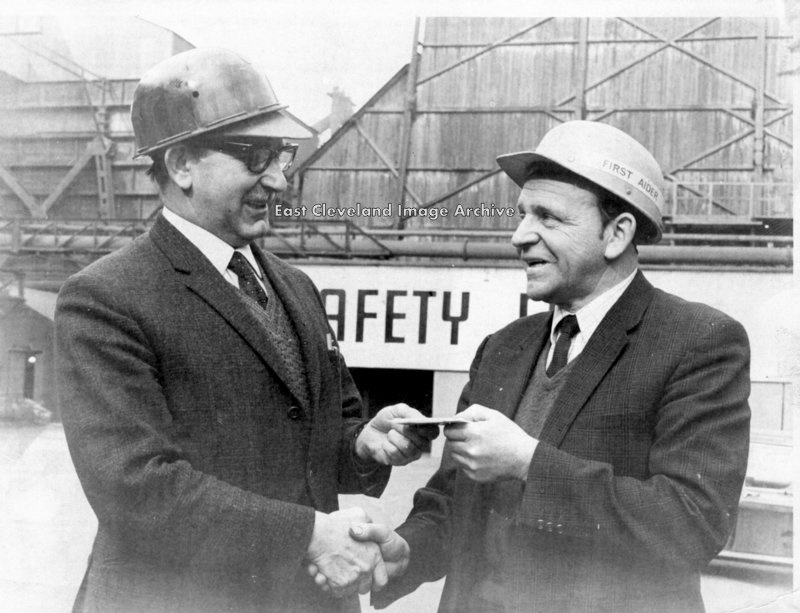 Walter Bradley the Works Engineer with Albert Atkinson receiving an award. The top of no 5 furnace can be seen between the cooling towers. Image courtesy of Dave McGill. 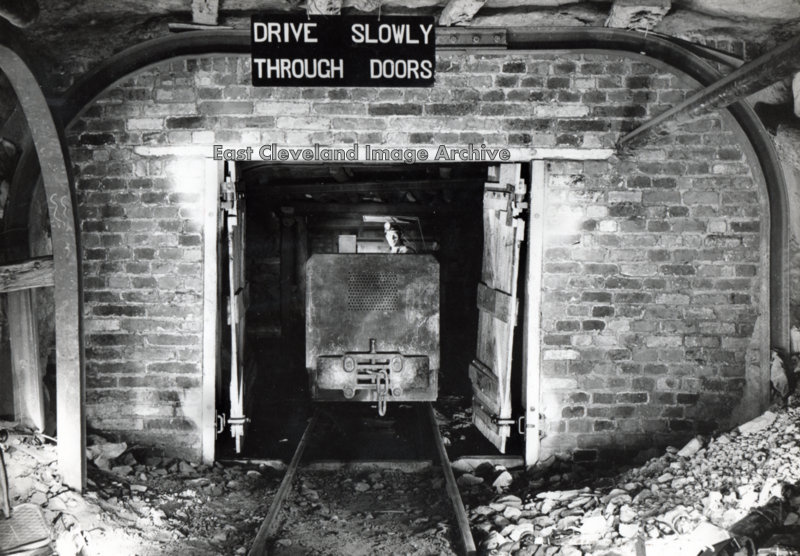 Self closing ventilation doors held open at Lingdale mine, this was needed to help direct the flow of air around the workings, dated 20th November 1958. Image courtesy of George Pearson. 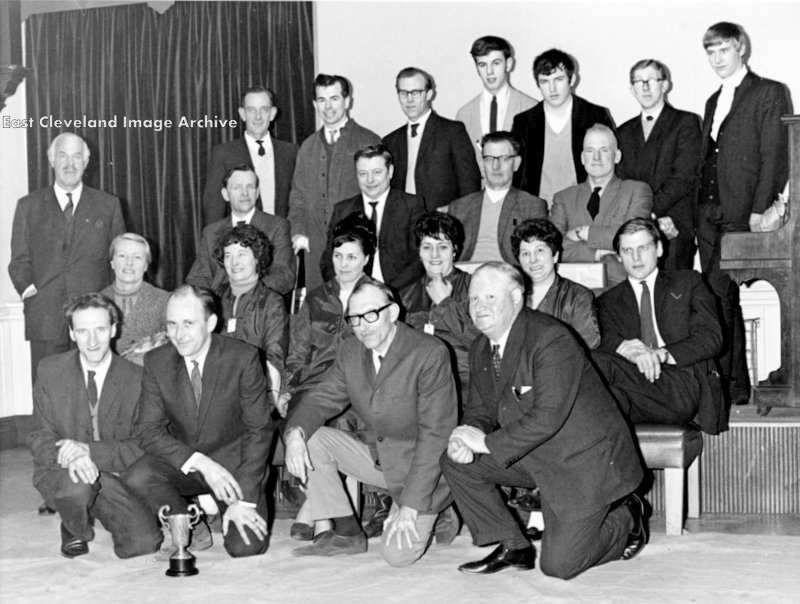 Back row: Jackie Toole, Matty Miller, Bill Hyde, Martin Green, Dave Partlett, Gerry Pearson, Jimmy Cush, Norman Myers. Brian Young tells us: ”This is possibly a First Aid presentation, a few of these worked in the medica centre.” Help is needed with names and identification of the cup. Image courtesy Dave McGill, also thanks to Brian Young, Bob Doe, Barbara McBurney, Eric Trembath and Col Hart for the updates. 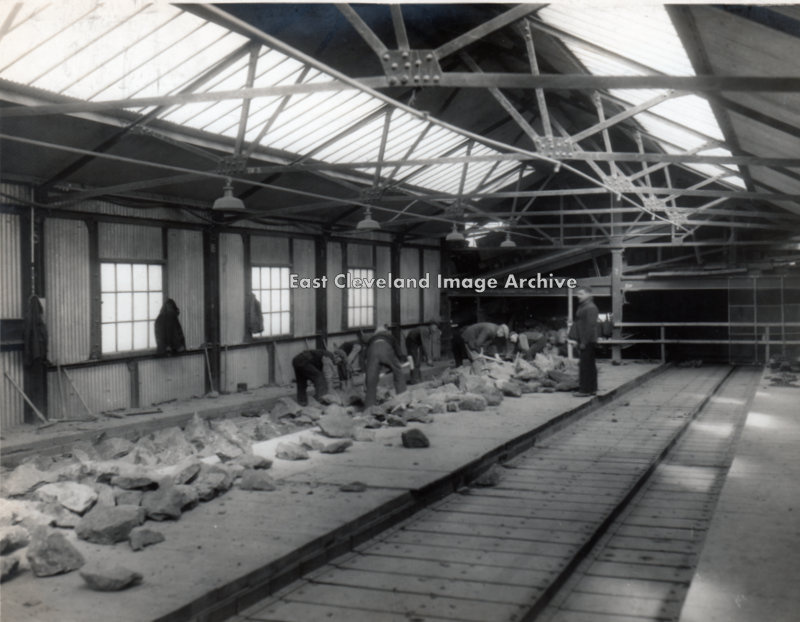 A typical scene on the picking belt at an ironstone mine in Cleveland. Here the shale was seperated from the ironstone as it came from the mine, larger lumps are being broken up by sledge hammers. Bill Danby tells us: ”My brother in law, Frank Holmes, who was a Deputy at both Lingdale and North Skelton Ironstone Mines says that this photograph is most likely Lingdale. North Skelton did not have a “belt”, as there so little shale content in the ore extracted from that mine, whereas at Lingdale the shale content was high. Hence the man-made mountain that used to stand behind Coral Street. South Skelton Mine, he adds, also had a “belt” but it was on a slope.” Image courtesy of George Pearson and many thanks to Bill Danby (and Frank Holmes) for the update. 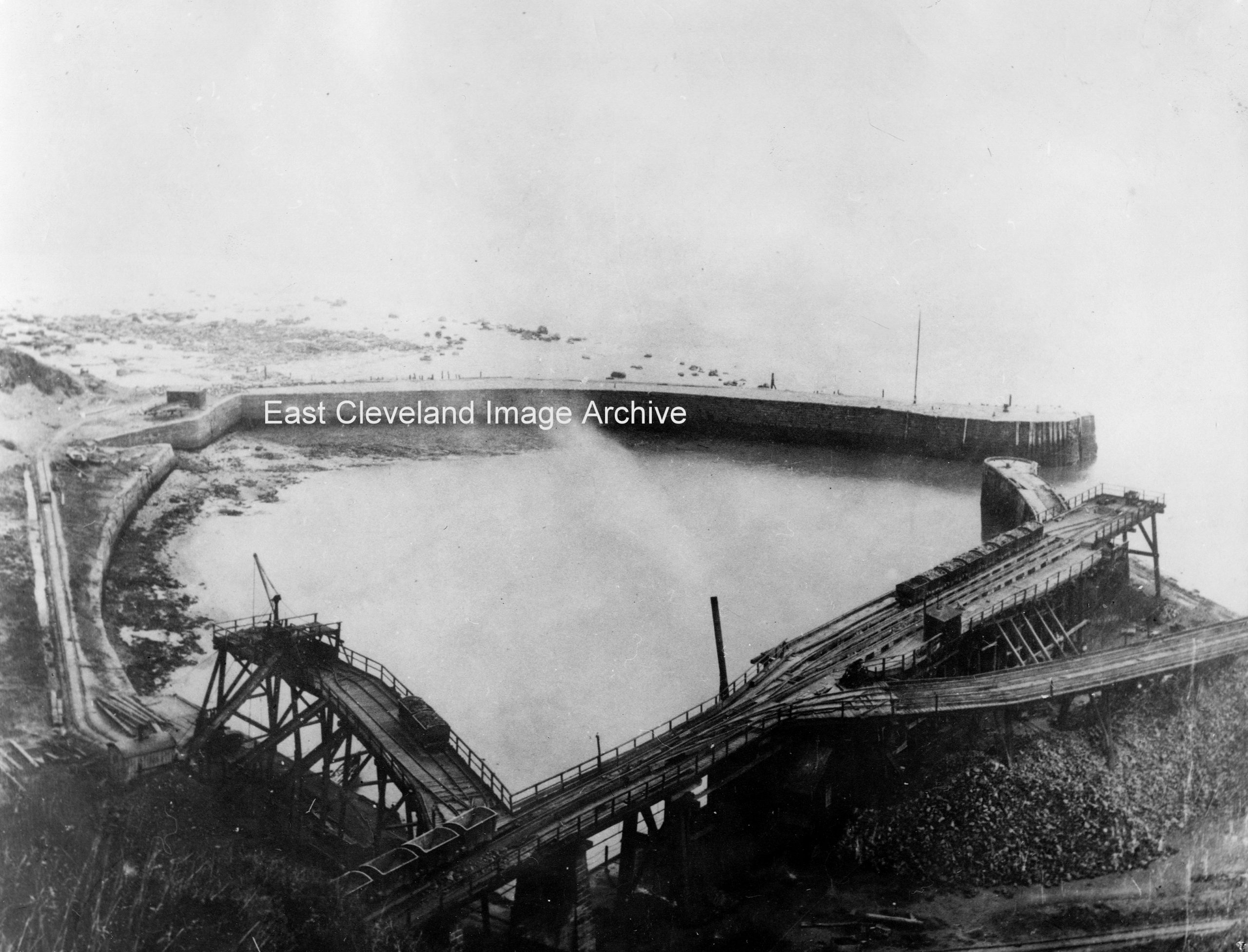 A lovely photograph of Port Mulgrave’s docks; when it actually was a port, built around 1856-57, it was a very busy place serving the surrounding mines. This shows the harbour prior to World War II, the disintegrating remains of Palmers ironstone loading staithes clearly visible; the seaward pier was blown up during the war. 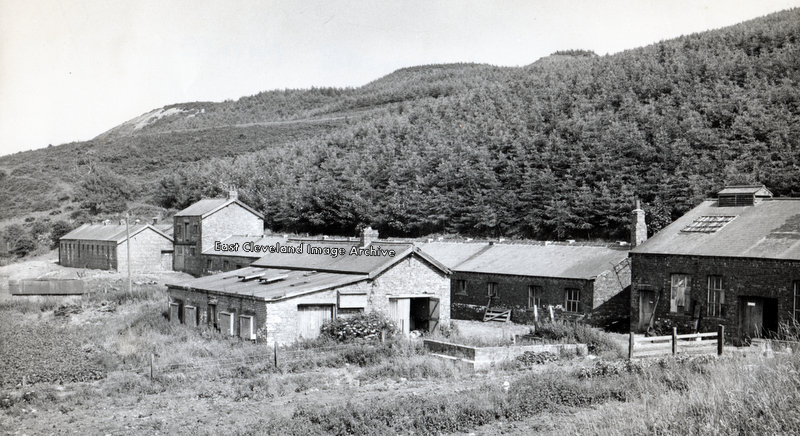 We thought this was Chaloner Mine, but we have since been advised by David Richardson: ”This is the workshops and stables belonging to new Belmont Mine near Hunter Hill Farm south of Guisborough. At Belmont Bank 500 metres east of this site was the original Belmont Mine, the ironstone seam there outcropped close to the foot of the bank but was found to rise to the west so by the time the mine was behind Hunter Hill farm its well over half way to the top of the bank. The drift for New Belmont mine is still visible off the right of this photo and was constructed of concrete, unlike the drifts at old Belmont which were driven straight into the ironstone seam this drift is in fact an underground incline which climbs up the hill to reach the seam but arrives there some distance into the mine on one of its main roadways allowing new stone to be worked beyond the old workings south of Highcliff Nab.” Geoff Bailey adds: “The adit to the Old South Belmont Mine was stiil accessible when I was a kid and we used to pass it on our way from Belmangate to “The Old Tank” at the top of Butt Lane.We didn’t go in cos we thought that it was haunted!” Geoff Barnard added: “Ah, the ‘old tank’! I remember that well. Are there any pictures of it anywhere? I never knew at the time, and of course it’s since been removed, but from what I remember it was either a Cromwell (’44 vintage) or the slightly later Comet (’45 vintage). Was it removed about the time the ‘Butts’ went? I’d need a picture to make sure. Both types were used during WWII, the former during 1944 (Normandy) etc, the latter not until very late 1944 and into 1945.” Chris Potter confirmed: “Yes I remember itwell! I think it was a Cromwell – I’m sure that’s what we identified all those years ago.” Geoff Barnard added: “It must have been early/mid 1960’s. How it ended up top of Butt Lane in Guisborough, that’s another question?” Caroline Watson finished with: “This is our farm, we have had it for 49 years my grandad Morris Watson had it; now my dad and auntie have it. Really great memories at this place over the years.” Image courtesy George Pearson and thanks to David for his clearing up our query. To Dave Woods for his advice. Also to Geoff Bailey, Geoff Barnard and Caroline Watson for the updates. |
||
Recent Comments